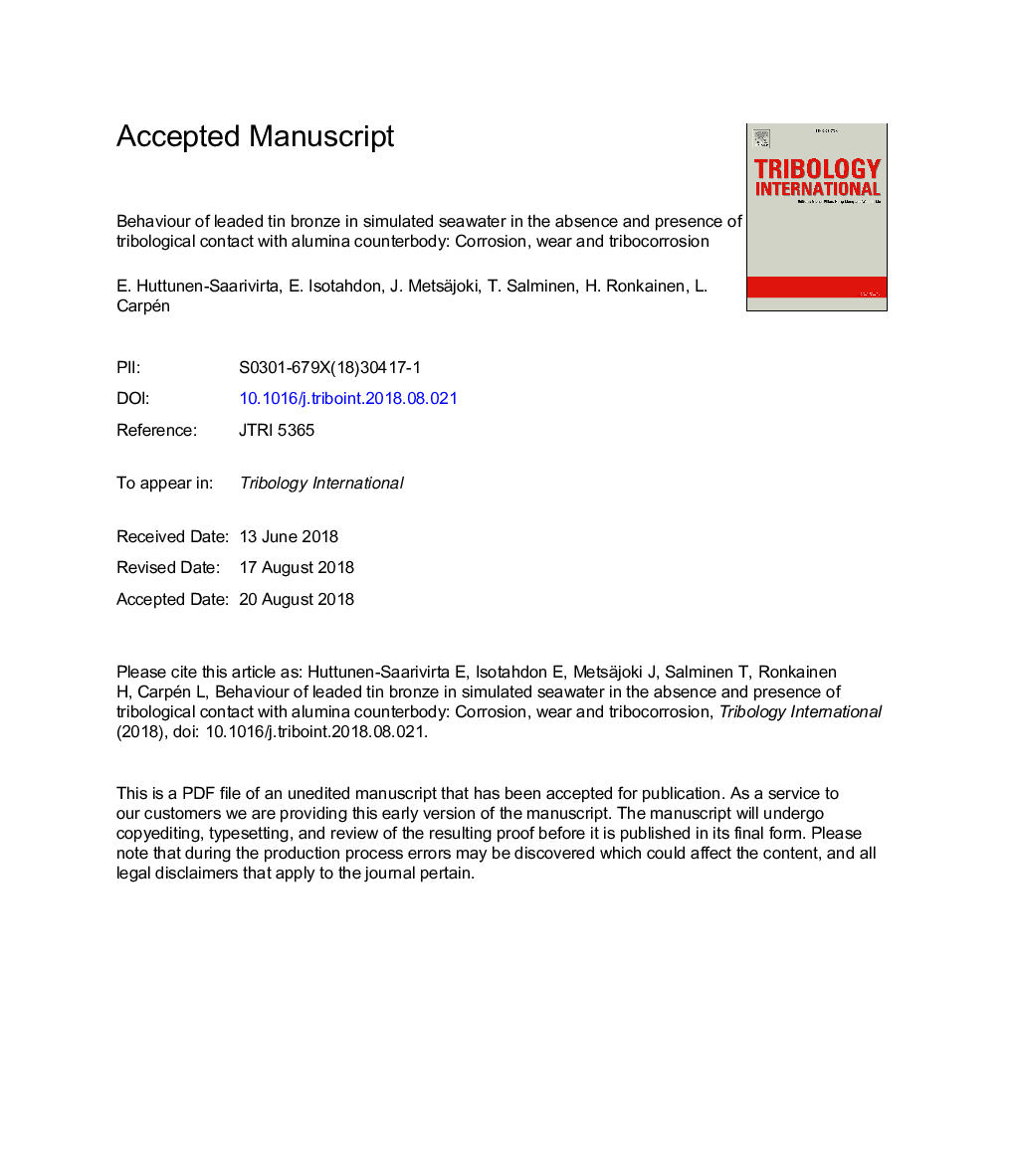| Article ID | Journal | Published Year | Pages | File Type |
|---|---|---|---|---|
| 9952543 | Tribology International | 2019 | 52 Pages |
Abstract
Corrosion, wear and tribocorrosion behaviours of leaded tin bronze were examined in simulated seawater using alumina counterbody for tribological contact. Active dissolution of alloy and corrosion product development on surfaces were the dominant corrosion mechanisms. Tribological contact with counterbody removed majority of the products, thus contributing to active dissolution of freshly exposed surface. This wear-induced corrosion mechanism contributed to 45% and 60% of total material losses at the two highest potentials, 50â¯mV and 250â¯mV vs. Ag/AgCl. Pure wear of alloy occurred in the form of abrasive wear. At anodic potentials under tribological contact, corrosion raised the friction coefficient as compared to pure wear and increased wear of the alloy. These results are presented and discussed in this paper.
Related Topics
Physical Sciences and Engineering
Chemical Engineering
Colloid and Surface Chemistry
Authors
E. Huttunen-Saarivirta, E. Isotahdon, J. Metsäjoki, T. Salminen, H. Ronkainen, L. Carpén,
